Brazil Congress: How police failed to stop the protest
- Published
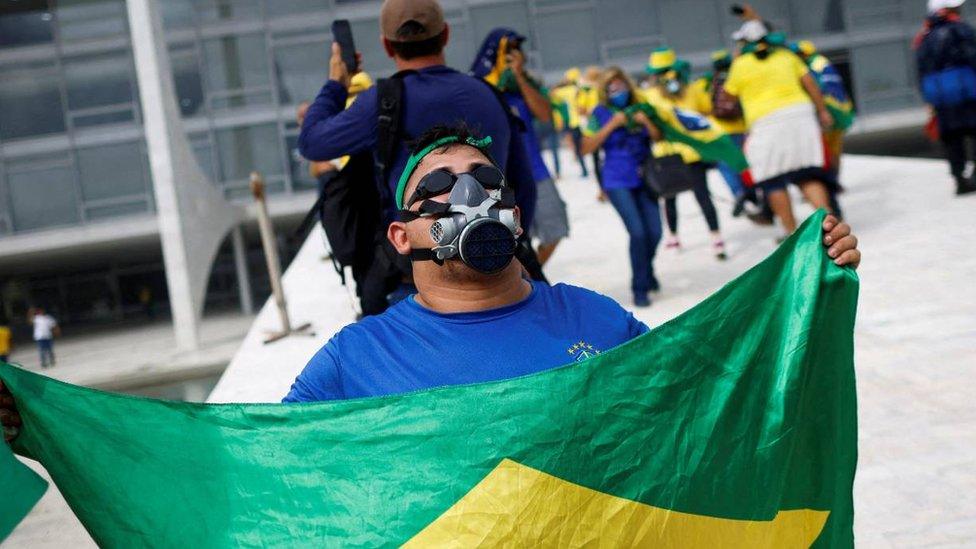
Just one week after the inauguration of Luiz Inácio Lula da Silva as president of Brazil, thousands of supporters of the previous incumbent, Jair Bolsonaro, stormed the country's Congress, Supreme Court and presidential palace.
The president said security forces in the capital, Brasília didn't do enough to stop them. We've looked into the key moments and how the police responded.
The march towards Congress
Since the narrow election win in October by the left-wing president, better known as Lula, supporters of his right-wing rival had been setting up camps in front of military barracks in many cities around the country.
His most ardent supporters have been calling for the army to intervene and overturn the election result.
Then over the weekend, thousands of people gathered outside the army barracks in Brasília, many of them brought in by bus.
President Lula called on local security forces to remove these protesters, but police had opted to not use force.

On Sunday afternoon, the protesters set off on a march towards the complex of government buildings, external. Video footage shows the march peacefully under way, with military police escorting them along the 7km (four mile) route.
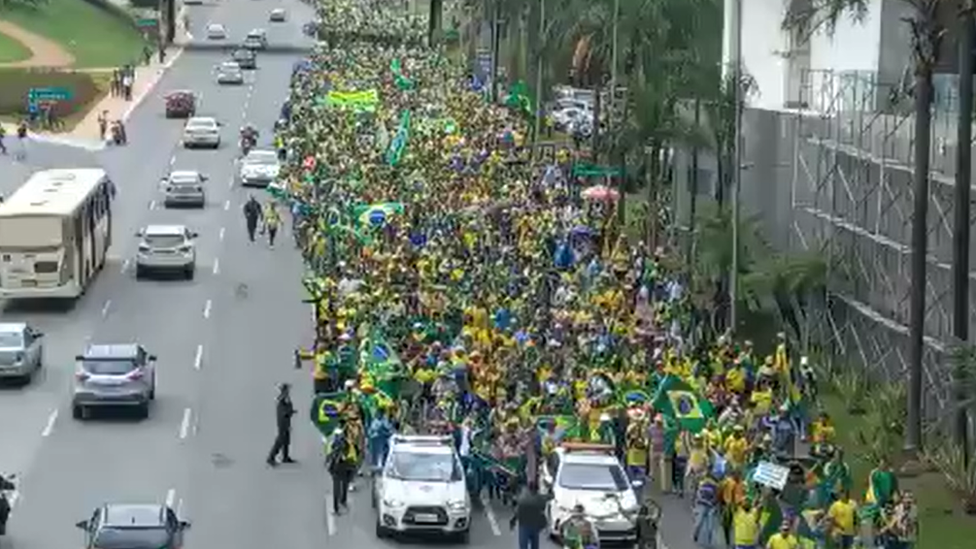
We have asked the police authorities in Brasília whether the protesters had been granted official permission to march along this route ahead of time. We haven't yet received a response.
Breaking through barriers
The protesters arrived at barriers blocking access to the complex of government buildings known as "Praça dos Três Poderes" (Three Powers Square).
A video verified by the BBC shows only a single line of metal barriers across a road through a relatively open area., external
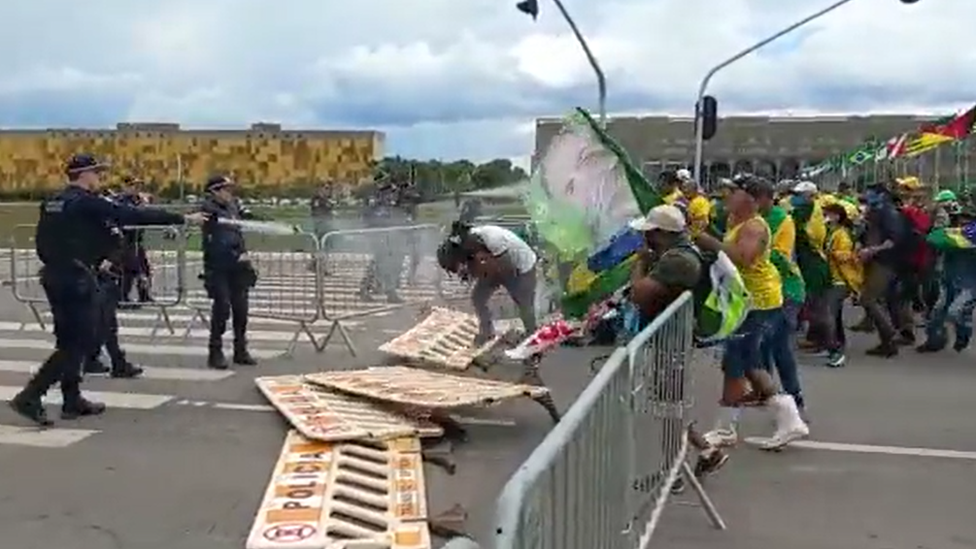
One of the policemen can be seen pulling out what appears to be pepper spray or tear gas, aiming it at the protesters, who quickly force their way through.
We have asked the police why they hadn't organised stronger barriers and mobilised more officers to control the situation once the protesters approached the government square.
Entering the buildings
Once the barriers had been breached, crowds flooded onto ramps which led to the Congress building and the presidential palace.
Police have been criticised for being too hands-off with the protesters as they streamed in.
Two videos we've verified shows policemen taking pictures of the crowds, external as they walk up the ramps and into the Congress building. , external
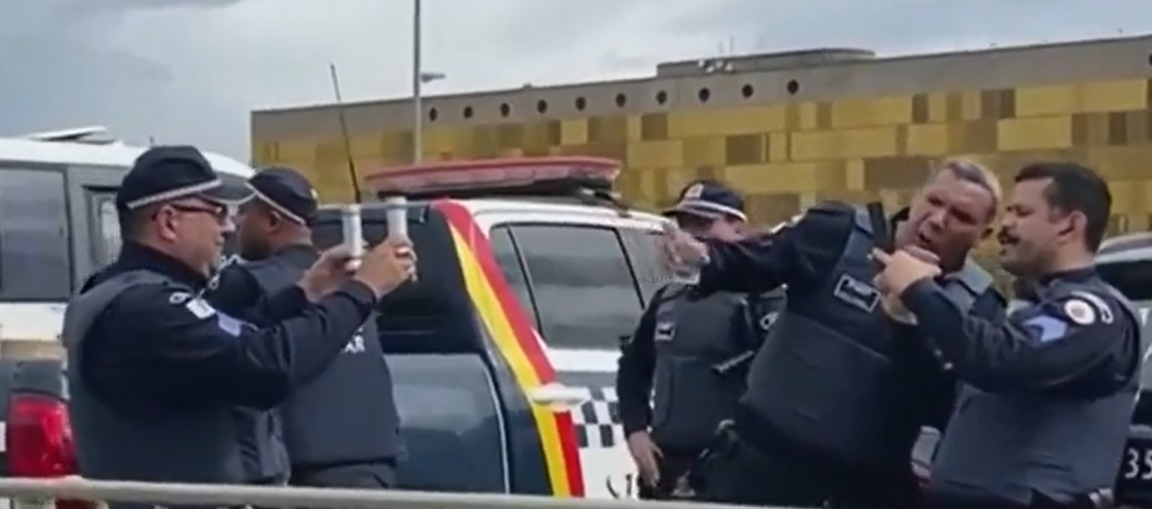
Another video shows a policeman being pulled from his horse, external by protesters as they approach the Congress building and thrown to the ground.
The National Congress and the presidential palace were breached just before 15:00 local time.
Videos show protesters using security barricades to smash through several large windows before entering, spreading throughout both buildings and onto the roof of Congress.
The BBC has also verified this video, external which shows police standing by as protesters walk up a staircase into the Congress building through the lower floor entrance.
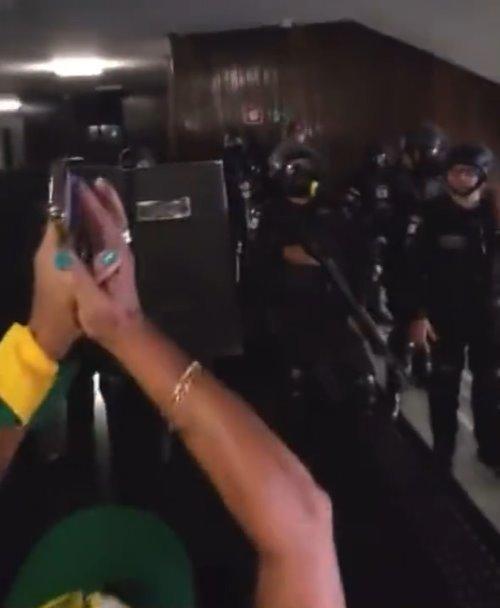
Police holding riot shields are standing on the right of the stairs, but they aren't protecting the main entrance and appear to be guarding a side corridor instead.
One policeman waves the protesters through and gives them a thumbs up. As the crowd move forward into the building, some of them applaud the security personnel.
From the police uniforms seen in the video it looks like they are part of the Policia Legislativa, the Federal police group that works inside Congress.
Shortly afterwards, a group also smashed windows of the Supreme Court and entered the building.
WATCH: Brazilian ex-president Bolsonaro's supporters smash Supreme Court windows
Destroying property
Images show that once inside the buildings, protesters destroyed furniture, equipment and works of art.

Social media posts from the afternoon of 8 January clearly show scores of protestors both outside in the plaza and milling around inside buildings, in some cases with no police or security forces visible.
Videos circulating online showed protesters trashing offices, smashing windows and doors, flipping furniture, and tossing computers and printers to the ground.
January 2023: Key moments as Bolsonaro supporters storm Brazil government buildings
Dispersing the crowds
The governor of Brasília, Ibaneis Rocha, eventually requested support from the national government, external - although it's not clear when exactly this was made.
President Lula announced soon afterwards that he had authorised national forces to intervene in Brasília, external.
Even with the involvement of additional forces, it took many more hours to bring the situation under control. The Supreme Court was the first to be cleared. Then, as more forces arrived, other buildings were also gradually emptied.
